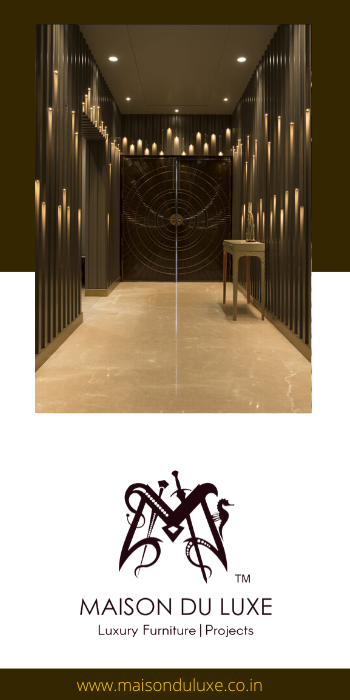ARCHITECTURE COMPETITION
Architects vision for the new Central Business District (CBD) of Thessaloniki, Greece… sponsor & organizer Alumil.
Register: MAY/25/2020, Submit: OCT/15/2020, Eligibility: Registered architects; natural persons, legal entities, partnerships of individuals; multidisciplinary teams lead by architects, Fee: Free, Awards: 1st Prize: 20,000 EUR, 2nd Prize: 15,000 EUR, 3rd Prize: 10,000 EUR, 4th Prize: 7,000 EUR, 5th Prize: 5,000 EUR, 6th Prize: 3,000 EUR, 4 Honorable Mentions
Thessaloniki is a historic city that has developed through the ages. It is located along the coast of Thermaikos Gulf whose west coast, including the port of the city, used to be a manufacturing zone. It is now uniquely located to spearhead the development of the city and its regeneration into a vibrant regional and international pole. Thessaloniki’s west waterfront area, where the city harbor is located, is today an underused urban area. It weakens the city’s image, livability, and productivity. Several past initiatives to facilitate the change towards urban growth and productivity have not been successful. So, the challenge remains. The Arxellence 2 Architectural Ideas Competition thus represents a major challenge of urban regeneration.
It is the first, and most decisive, step towards meeting the expectations of a new, cosmopolitan Thessaloniki. It is hoped that visionary competition schemes will pave the way for the regeneration of this decaying urban area through local government initiatives and private sector participation.
BACKGROUND
Modern cities compete globally to be attractive places for living and working. Attracting new high-income residents and investors strengthens the profile of a city and contributes to its revitalization. This entails an upgrade of the standard of living and professional activities through the enrichment of services provided, infrastructure improvement and new fields of business opportunities.
For cities to become attractive destinations in the era of globalization, they must fulfill business criteria of local and international interest.
Thessaloniki is a city rich in history. Like most of the historic cities of Europe, Thessaloniki continually addresses the conservation of its historic sites. Its urban layout originally emerged in an unregulated way, thus restricting its potential to become a flexible city, developing in tandem with the changing realities of a world in continuous mutation. Tourism and migration, from Greece and countries in distress, have aggravated the urban realities of the city.
The large, flat site that is the object of this competition stands to provide the spark for a new tomorrow. It is in the western industrial part of the city. It adjoins the port and is very close to the main railway station and the bus hub. The envisaged dynamic development of this site as a Central Business District (CBD) is expected to pave the way for the installation, in its wider area, of trade and tertiary sector (services) facilities.
The Arxellence 2 architectural competition aims to highlight innovative design as the ideal tool for the success of the new CBD of Thessaloniki. The building programme outlines the contours within which the proposals are to be conceived. Participants are invited to interpret the aims of the competition in the most creative way, the end objective being the image of a new business center that will exude originality and innovation. Spatial organisation, aesthetics, choice of materials, incorporation of environmental and social sustainability measures, particularly evidence that the UN SDG’s have been taken into account, are factors that will reinforce the primary aim: to make this project a standout initiative that will attract investors, businesses and visitors. The project must underline, through architecture and urban planning, that Thessaloniki belongs to the front line of the forward-looking cities of the world. A city able to boast, not only top-level business facilities, but also mixed neighborhoods with high quality of life.
TASK DESCRIPTION
Participants are encouraged to freely formulate their proposal, distributing the desired functions up to a maximum gross building floor area of 400,000 m2 (site area 120,000 m2, 7 buildings to be retained). Participants are to choose the optimum ratio in the mixture of uses that will support the viability and the aesthetic impact of a future investment.
The desired principal uses include office spaces, administration spaces, shops, food and beverage outlets, cafés, restaurants, as well as recreation areas, residences, a conference center, personal well-being (spa, gyms, etc.) and sports areas.
Auxiliary and supportive uses include reception and waiting areas, storage spaces, garages, mechanical facilities, security and maintenance areas.
Internal circulation areas include staircases, reception areas, patios, roof gardens (where applicable).
External circulation areas, including roads, pedestrian access routes, paved and planted areas are to complete the proposal in a unified avant-garde architectural vocabulary with environment and sustainability friendly solutions.
In order to allow free rein of the design capabilities of competitors, the competition brief does not place any mandatory restrictions other than the following:
- Maximum total surface of proposed building or buildings
- Maximum height
- Parking space requirements
- Vehicular and pedestrian entrances to be only from 26th October Street
- Listed buildings to be retained
All other buildings currently on the site are to be ignored, i.e. deemed as non-existing.
Candidates may note that the siting of proposed buildings is not subject to restrictions on minimum distances between other proposed buildings, listed buildings, or the boundaries of the overall property. It is, thus, entirely at the discretion of the competitors whether or not to they choose to respect any existing building lines or protection zones of listed buildings. It is similarly not necessary to respect any other restrictive provisions of the Greek town planning legislation and special local building regulations (coastal zone boundaries, distances from road axes, distances from railway lines, maximum heights, maximum volume coefficient, etc.).


























Leave a Reply